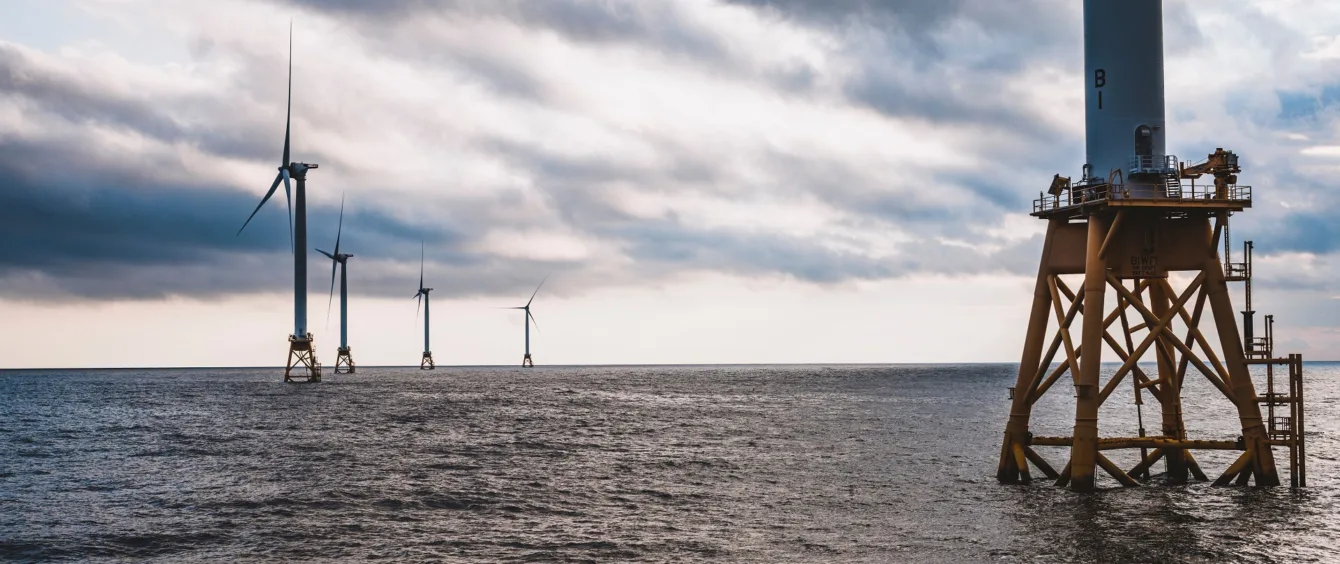The US offshore wind sector has been on the cusp of a major breakthrough for what feels like a long time, but as the saying goes, ‘good things come to those who wait’.
Europe and China both have more than 30 GW of offshore wind capacity in operation, while the US has just a fraction of that – 42 MW. However, the momentum behind the sector has gradually swelled under the Biden administration, which has set clear targets for 2030 and pushed forward the administrative and legal measures necessary to get the sector off the ground and into the water.
The US now has 938 MW of offshore wind capacity under construction, meaning it is truly on its way to commercial-scale offshore wind development. Both the 806 MW Vineyard wind farm off Massachusetts and the 132 MW South Fork wind farm off New York are scheduled for completion this year.
Over the next decade, offshore wind is expected initially to energise the transmission wires of the country’s densely-populated east coast with clean power before spreading around the varied coasts of this huge and industrious country.
Advanced-stage projects now top 16 GW
According to the American Clean Power Offshore Wind Market Report, the project pipeline now amounts to 51.4 GW, of which 84% are planned for the east coast. Of the total, 16.6 GW are at an advanced stage of development.
New York state currently leads with nearly 4.4 GW in the pipeline. New Jersey comes second with around 3.8 GW in advanced development, while Massachusetts will take a big step forward in terms of operational capacity with the completion of Vineyard, the US‘ first large-scale wind farm.
Ten wind farms have submitted Construction and Operation Plans and are awaiting final environmental review, which should then allow the Bureau of Ocean Energy Management (BOEM) to issue a Record of Decision, allowing construction to start. The BOEM has issued draft environmental statements for seven of the ten projects, according to Clean Power America.
State-led momentum
Momentum in the sector is being driven by state governments. In total, ten US states have combined offshore wind procurement targets of 81 GW, more new offshore wind than currently installed worldwide.
Based on the advanced stage projects, US offshore wind capacity should increase from the current 42 MW to just over 1 GW this year and then to more than 9 GW in 2026. Deployment continues to accelerate, with the cumulative total rising to 12.0 GW, 15.2 GW and 17.6 GW in 2027, 2028 and 2029 respectively, based on Clean Power America’s data.
However, even at this rate of development, many earlier-stage projects need to move forward quickly to achieve the US government’s target of 30 GW of offshore wind by 2030.
Supply chain investment starts to deliver jobs
Like all countries, port and other supply chain infrastructure in the US needs to expand to meet the needs of this new clean energy sector.
According to the National Renewable Energy Laboratory (NREL), hitting 30 GW by 2030 will require 2,100 turbines, each with foundations, 6,800 miles of cable, 58 crew transfer vessels and 29-37 other specialist ships, creating in the process between 12,300 to 49,000 full time equivalent jobs.
This investment is already starting to emerge. The US offshore wind supply chain is gearing up for busier times, creating high quality jobs in the process.
More than 30 new or retrofit ships have been ordered or are under construction in US shipyards, according to Clean Power America, with more in the pipeline, to support the sector. In addition, 14 new facilities have been announced for cable and offshore substation manufacturing, compared with just three such facilities at present.
In all, NREL estimates that creating a domestic supply chain capable of supplying 4-5 GW of projects a year will require at least $22 billion of new investment in ports, large installation vessels and manufacturing facilities.
